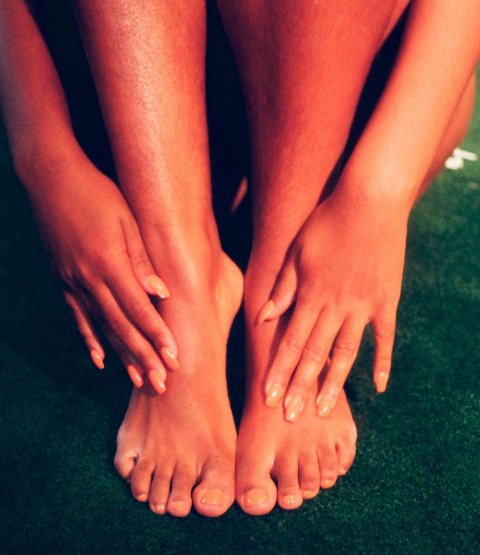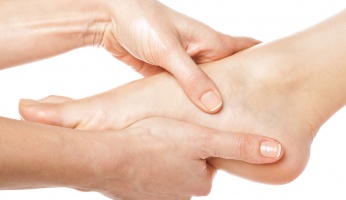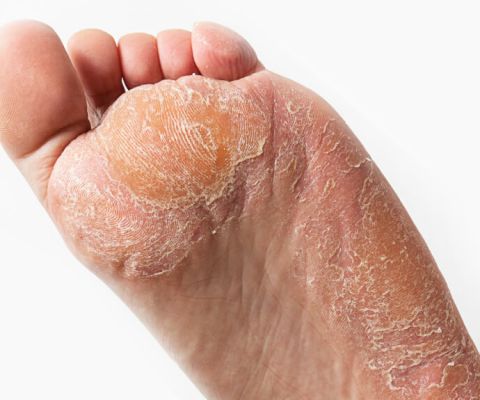Plantar Fasciitis: Symptoms, Prevention & Treatment
 Plantar Fasciitis: Symptoms, Prevention & Treatment www.walkjogrun.net
Plantar Fasciitis: Symptoms, Prevention & Treatment www.walkjogrun.net You know what’s a real pain in the a**? Foot pain, as it turns out. Bet you didn’t see that one coming! It’s true, though, and everybody knows it. If you’ve suffered from any foot pain throughout your life, and most of us have, then you understand how achy feet can absolutely ruin your day. Whether you’re footsore from walking the city or from running a marathon, the result is always the same. Nobody wants to be in pain (Obviously. Case in point: Modern Medicine).
Do you know how many adults suffer from foot pain in a year? 8 in 10. Yup, that’s right. That is an absolutely insane number and not a great prospect for most of the population. Thankfully, most cases are pretty benign, although some people do have hereditary conditions or injuries that are consistently in their lives.
No matter what causes pain in your feet, you’re going to want to get it checked out by a doctor. You may actually have the beginnings of a serious problem. Early detection is key, especially with what is quite literally the main mode of transportation for most people. The topic of the day is a bit more specific than past blogs I’ve written on the subject of foot pain (*psst* click here).
Today we’re going to be talking about a specific type of pain: Plantar Fasciitis. I know, I know. Interesting stuff, right? It’s a topic that can be a little dry, especially in-depth, but I’m going to try and make it as easy to read as possible. You’re gonna get the full skinny, with a fraction of the frustration because there’s no better power over an illness or injury than knowledge. So, this is your chance to take back control.
Plantar-Whatie-What?
Plantar Fasciitis. It reads like a mouthful… and, to be fair, it kind of is when you say it out loud. However, there are definitely far worse ailments out there with even crazier names. I’m of the opinion that if all you have to say is “Plantar Fasciitis”, you’re doing pretty alright.
Except for, y’know, the fact that you have Plantar Fasciitis. That part isn’t very alright.
So, what do you know about the anatomy of the foot? Or medical terminology? It’s actually pretty easy to figure out if you’re familiar with the lingo. All official names have Latin roots, which makes things insanely simple to break down. For example, the root -itis means “inflammation”. So, colitis is the inflammation of the colin. Or, more to the point, plantar fasciitis is the inflammation of the plantar fascia.
The plantar fascia is a ligament that runs along the sole of your foot. Its purpose is to handle the day-to-day stress and strain we put on our feet, as well as anything extra we throw its way. Running, dancing, walking on hard surfaces; all of these contribute to extra inflammation. The excess pressure and strain cause small tears in the muscle which equates to heel stiffness, shooting pain, and, in some extreme cases, trouble walking.
When your plantar fascia can’t take it anymore, it becomes irritated and inflamed. This, as I’m sure you’re aware, is when plantar fasciitis becomes a painful reality.
So, is that all that can cause plantar fasciitis? Or is it more complicated than that? Are there genetic factors that play in alongside the environmental ones?
I’ll answer that, and so much more, next.
The Role Of Genetics
It’s no secret that your parents, and their parents before them, play a huge role in your general health. Being predisposed to different ailments is caused directly by the genes you inherit. That’s why it’s so important to ask your parents if anybody in your family has died of a heart attack, for example, or a stroke. Your doctor will ask this very question — what your family members have passed from, and your genetic predispositions — because it’s crucial in determining your health care plan moving forward. If you know of something beforehand you’ll be less surprised if it pops up, and you might even be able to see the warning signs well in advance.
However, sometimes these things cannot be cured, but only managed. Plantar fasciitis falls in the later of those categories. The good news is that the plantar fasciitis itself isn’t genetic. The bad news is that it’s more common in certain foot types… which totally are genetic. Tight calves are also a risk factor, but this can normally be remedied by exercises which stress those muscles out.
High arches are the main contributor to predisposition, so if you have high arches be on the lookout. Make sure to engage some of the preventative measures we’ll list below, such as stretches and avoiding situations that will agitate your plantar fascia.
So, we know about the plantar fascia as well as the genetic factors that come into play. We’ve also briefly touched on the environmental causes. Now. let’s take a closer look at those day-to-day stressors.

- Running: It’s no secret that runners suffer from a full range of foot problems. Running puts a huge strain on your entire body, especially for those who are pushing themselves to peak performance. This constant, hard pressure on the balls of your feet translate into muscle damage, which leads to plantar fasciitis.
- Tightened Calf Muscles: In order to find out if this accurately describes you, do this little exercise: Flex your foot upwards so that you’re pulling your toes toward your shins. If you are unable to do so or found it particularly tough to do, your calf muscles are tight. There are several exercises you can do to help with this, but I’ll cover that in a different blog post.
- Dancing: Are you involved in ballet, jazz, or tap? As it turns out, twirling around on your toes and keeping them pointed at all times is not actually that great for your feet. Pretty much any type of dancing will put extra strain on the entire foot, but especially on the part that’s hitting the floor when you come down from jumps or finish your pirouette. There are, as mentioned, exercises that you can do to lessen the strain. Your dance teacher will probably have you do them as part of your warm-up routine, even if you don’t know it! Dance instructors are pretty good like that.
- Hard Flooring: Many Americans work in a place that has hard flooring. Cement or even hardwood can definitely take a toll on your fascia and make things pretty uncomfortable. In fact, many complaints related to working in factories, for example, stem from sore, aching feet! On top of this, you’re probably wearing heavy work boots that just add to the stress. This is why insoles are so incredibly essential in a work environment where concrete is commonplace.
Those are some of the main causes, but quite frankly there is a boatload we haven’t even touched on. I’m sure you can figure out the rest, however, given the description of the problem and a few of the main causes. So, how do you solve the problem? What’s the solution? I was just getting to that!
What Can I Do?
Honestly, there isn’t much you can. When you have plantar fasciitis you just have to rest your feet a little and wait for it to pass. Like all muscle tears, it will heal on its own in time. The best thing to do is to stay off of your feet as much as possible, invest in quality insoles, start doing daily stretching, and pay more attention to what your body needs in general.
For extreme cases, you may require surgery, but this almost never happens. In fact, studies show that about 95% of people who have plantar fasciitis will not require surgery to get better. It’s only in rare, extreme cases that a person would have to resort to having their feet surgically altered. You should absolutely look at every single option and try them for at least 6-9 months before you even think of surgery. The success rate is fairly low, only 70-80%, and so there’s no guarantee it’ll even work for you. Those odds are alright, but they aren’t exactly great.
So, if you think you may be suffering from this, then try some at-home remedies (I’ll be writing up a blog shortly about them!). Give it some time before you see your doctor. After all, that copay ain’t payin’ itself! If it continues after a month or so then you may want to get it checked out by your physician.

Plantar fasciitis is annoying, painful, and absolutely a drag on your day. Luckily, though, it isn’t a very serious problem. Most people at one point or another will experience the inflammation of their fascia. It’s like one of those weird parts of our shared humanity! “Congratulations on being human, now here’s some foot pain!”. Stupid, but totally true. The good news is that we have so many different ways to combat the cruel realities of the human condition. When enough people are complaining about a problem, something is generally done about it. Foot pain, in general, is one of those things.
I guess this is where I’ll leave you! You’re now armed, hopefully, with more information about this ailment and are better able to handle it if it arises. The hope is that you won’t ever have to deal with plantar fasciitis, but chances are, at some point, you will. Try to stave that off by incorporating basic foot and leg stretching into your bedtime or morning routine, and investing in quality inserts. Or, hey, take your chances… Even though those chances aren’t lookin’ too good.
Until next time, folks!
Sources
- , Diagnoses and Treatment, Medical
- , Plantar Fasciitis, Informational
- , Treatment, Informational















